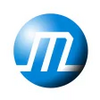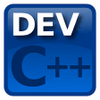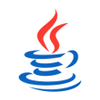Get ready to build your own 2D fighting game with classic, cartoon-style characters
Get ready to build your own 2D fighting game with classic, cartoon-style characters
Vote: (901 votes)
Program license: Free
Developer: Elecbyte
Version: 1.1-beta-1
Works under: Windows
Vote:
Program license
(901 votes)
Free
Developer
Version
Elecbyte
1.1-beta-1
Works under:
Windows
Pros
- Works with a massive library of add-on characters
- Gamers can play out their wildest fighting game fantasies
- Controls can be remapped fairly easily
- Offers several multiplayer modes
- Runs more quickly than many vintage fighting games did
Cons
- Some sprites aren't sized correctly
- Adding new fighters may require editing configuration files
- Some artwork may have an amateur-looking bent to it
Mugen is a fighting game engine that enables gamers to create their own mashups and battle with any character they add to it. Huge libraries of aftermarket game characters exist, which can be attached to the basic Mugen package for later use. Players are also free to experiment with a wide variety of arenas and backgrounds in order to create a truly custom experience. As a result, it's seen as an excellent way to build fantasy fighting tournaments that could never have happened in the original properties that these characters are from.
In spite of the fact that Mugen tries to emulate the look and feel of classic 16-bit fighting games, it actually runs much more smoothly than any of these. The sprites are fast and responsive, so they're able to move around the screen quite quickly without causing the screen to tear. Experienced players may want to manipulate the speed at which Mugen runs in order to enjoy a greater challenge. Faster speeds allow them to pull off exciting moves, but they also add to the thrill by making the computer players that much more fierce.
A variety of multiplayer modes come bundled with the game, which means it might even be more fun to enjoy with friends. Traditional arcade and team arcade modes are combined with a cooperative versus option as well as a team versus mode, which allows both players to put together their favorite collection of fighters and go head-to-head with them against one another. Survival fights are also an option, which require players to fight against a long gauntlet of other warriors over a period of time to see how many they can take down before they finally run out of health. No matter how many opponents you're able to take down in this mode, Mugen will keep sending them at you. It'll recycle characters over and over again if you find that you're able to stand up to what the game has thrown at you so far.
Virtual martial artists can take advantage of the included training mode so they can hit a non-responsive opponent until they're ready to try out their moves in a real fight. While this might be seen as something most useful for new players who haven't ever had the opportunity to try Mugen in the past, it's probably going to be more appealing to dedicated hardcore players who want to test out new characters they download and add to the game.
Each character has its own set of special moves, and these can take some time to master. By including a training mode, Mugen makes it possible to learn them before being thrown into the fire. By default, the Mugen engine uses the four direction keys for movement coupled with a series of seven buttons to perform actions. This is designed to model as wide a number of different fighting game control maps as possible. Since this might not be right for all types of players, however, it shouldn't be too difficult to change them to something that works better than these do.
Watch mode is an unusual feature that lets players take a short break and view a match battled exclusively by computer controlled opponents. Those who want to really learn how the game's artificial intelligence works will certainly want to check out this mode. It's also an interesting screensaver since the AI will sometimes actually have a fairly decent match.
The biggest appeal for most players is the ability to expand Mugen far beyond its original design specifications. MS-DOS versions of the game came out as early as 1999 and it's been possible to create custom characters ever since. As a result, many players have developed special sprite packages that enable gamers to add their own designs directly into the directory that Mugen's executable lives in.
Due to copyright limitations, these packages usually aren't distributed alongside of Mugen. Users will have to first download the game and then start to add them later on in much the same way that they would have added modpacks to a more established three-dimensional game. Though installing too many at once can slow down the game, the process is usually as simply as moving a few files between one folder or another. That means that even the most addicted players aren't going to need any management applications. They'll be able to take care of everything they need to from inside Windows Explorer.
Characters from Street Fighter, Mortal Kombat, Naruto, Dragon Ball and Sailor Moon can all fight against one another using this unique system. Such things could never happen in an official game for obvious reasons, but fans have made it possible by figuring out individual statistics for each sprite they create in Mugen. Though this process has taken fans a while to complete, they've been able to put together an incredible collection of fighting game characters that couldn't be seen in any real release as a result of copyright considerations.
Creations haven't even been limited to human characters. Werewolves from games like Darkstalkers and Killer Instinct fight in Mugen alongside of giant insects from King of the Monsters. Unfortunately, not all of these sprites are sized correctly and it's easy to come across some that weren't play tested. Those who plan on exploring the often chaotic and unreliable world of Mugen mods will want to dedicate some time to balancing out their collection of characters before they start to play any serious games with them.
Nevertheless, their efforts will be rewarded with an excellent experience since there's nothing quite like a well balanced game of Mugen. The name apparently comes from a Japanese word that roughly translates to infinite or unlimited, which is quite fitting since there's virtually no limitations to the types of games that fans can put together if they dedicate themselves to coming up with new ideas. When they first unpack Mugen, however, they might find that it looks a little bare.
That's because the actual non-commercial package contains only a minimal runtime environment. Granted, some game hacking groups have elected to share this alongside of their own creations, but the original base package is just a bare-bones distributed archive that contains the game files and a few demo assets. It would actually be difficult to even play Mugen when you first unpack it, because it really doesn't come with any of the things that players would need to enjoy it the way you would any other fighting game.
Quite a few players will look at this as an opportunity as opposed to a limitation, however, since it frees them to create an experience that's tailored to their tastes from the ground up. It's also great from a performance standpoint. Out of the box, Mugen runs extremely fast and goes through a cold start in almost no time flat. While there's a good chance that fans might run into some desktop crashes if they start putting incompatible modules together, these problems are corrected by simply getting rid of the files that caused them.
Dedicated players will probably want to keep an original Mugen package on hand to fix any runtime problems later on. They can just unpack it to a new directory each time they wanted to try out a new plugin. Modern versions of the game use the efficient Simple DirectMedia Layer as a well to handle OpenGL and Direct X graphics, which helps to further enhance the overall playing experience.
Screen packs are another feature that those who want to get the most out of the game are going to need to explore. When you first start Mugen, there are only slots for a handful of characters. Players who start to add large numbers that they downloaded off of the Internet will quickly run into a situation where they physically run out of the screen real estate they need to access characters. While adding additional fighters won't crash the system in any way, they won't be able to select them when it comes time for a match.
Each of these so-called screen packs replaces all of the menus and the character select system. Some of them are designed to simply increase the amount of screen real estate that players have to work with. Others are made to completely reskin the interface in order to make it look and feel like another game entirely.
To that end, there are screen packs that can make Mugen feel almost identical to the original Street Fighter II arcade cabinet's interface. Others might attempt to emulate the feel of the much praised MS-DOS port of Mortal Kombat or perhaps a classic PlayStation title. Assets are available for an entire generation's worth of vintage fighting games.
Nevertheless, Mugen is not an emulator and doesn't provide the functionality to play external ROMs. It can only use custom assets that were developed specifically with the software in mind. Anybody who wants to actually play one of these games will have to look elsewhere because Mugen can't load packages that are actually compiled for use with other operating systems.
That being said, Mugen could be an improvement on them in many ways. It doesn't aim to offer bug-for-bug accuracy, which means that it may actually correct many of the minor flaws that players felt plagued older fighting games. It also provides gamers the opportunity to create their own characters whenever they see fit.
Naturally, quite a few players have gravitated toward crafting characters from other properties. However, the game also attracts talented artists who enjoy creating fighters and backgrounds that are entirely original. Skilled players might want to try their hand at crafting new menu and interface artwork as well. While these sorts of chores might not necessarily attract as much fame in the Mugen community as those who port over people from other titles, there's no reason why this can't become a sort of pastime in its own right as well. In many ways, playing Mugen has become a social experience where people share different modules they create over a network and then talk about them. For that matter, there's plenty to like for anyone who wants to start delving into the more technical aspects of how Mugen works.
Few fighting game fans are likely to spend much time looking through the game's backend processes, but those who do will find that it's built on top of a rock-solid Allegro core that doesn't require them to install many dependencies. For a game that features so much customization and emphasizes creating new modules, it's actually capable of running without requiring the user to install much of anything at all.
Allegro features a full set of joystick routines as well as those that manage keyboard and mouse input. Players who'd prefer to use a USB joystick can usually do so simply by going to the input configuration menu and pushing the inputs on their joystick when prompted to depress a key. Those who find this doesn't work can normally correct the problem merely by unpacking a single archive and restarting the game.
Troubleshooting is going to be something that people who play Mugen will more than likely become quite accustomed to, but this shouldn't be looked at as a drawback. Playing it is almost more like a complete hobby than it is merely playing a game. It's that incredible experience outside of the mere title itself that should keep people coming back time and time again even if they might not otherwise have even played one-on-one fighters very often.
Pros
- Works with a massive library of add-on characters
- Gamers can play out their wildest fighting game fantasies
- Controls can be remapped fairly easily
- Offers several multiplayer modes
- Runs more quickly than many vintage fighting games did
Cons
- Some sprites aren't sized correctly
- Adding new fighters may require editing configuration files
- Some artwork may have an amateur-looking bent to it
Pros
- Create Custom Cartoon-Style Arcade Games
- One Included Demo Game
Cons
- Requires Functional DOS Knowledge
M.U.G.E.N is a graphics engine and game creation software suite that has spawned a number of classic 2D fighting games like Paws of Fury and Street Fighter. If you're in the age group to have regularly played this type of 2D sideview fighting game in your youth, you probably played several games that were built with this software.
The M.U.G.E.N software is going through a resurgence of popularity in the midst of the modern video game market. The software has finally become fairly standard in terms of what the average user can handle with enough determination, and the classic cartoon-based graphics produce an incredible level of nostalgia even when creating and playing an entirely new game.
Of course, using a graphics engine to design a brand new video game isn't an inherently easy task. You need to have a firm grasp of the DOS programming language, or at least be willing to learn it as you go. The M.U.G.E.N engine includes a single predesigned game named after the engine itself, but the game is really more of a demo than a full game worth any real effort or attention.
The 2D DOS-based graphic design engine known as M.U.G.E.N was initially made public in 1999. With the right knowledge and a little creativity, anyone can design stages, game obstacles and objects, and playable characters. To create these digital effects, the software uses text files that it interprets as visual game elements coupled with compilations of sounds and graphic content.
If you want to add custom sound effects, the software is capable of dealing with a number of audio file types, and it offers MIDI support for expanded sound effect potential.
This powerful piece of software recently became free for the full version. For many years before that, the engine was in Release Candidate. However, the switch to a totally free piece of software didn't come with any major improvements beyond the change to the software license that allows the M.U.G.E.N core code to be included in game bundles as long as those bundles remain free. The rest of the update was only repairs to certain minor faults and bugs.
Even though the game engine is set up to develop 2D fighting games, it can be configured to develop other game varieties like platform games and side-scrolling shooters. Anyone who misses the days of classic arcade games can take advantage of M.U.G.E.N to create their own homage to that golden age of video games. All it takes is the willingness to learn some relatively simple coding.
In the most recent version of the engine, M.U.G.E.N saw a number of useful changes. An issue with invalid WAV files associated with SND files once caused the software to crash, but now a simple warning is logged and the software continues working. You can now customize the F1 info box text for the title screen through system.def, and an audio glitch that caused certain sounds to play incorrectly has been repaired.
Pros
- Create Custom Cartoon-Style Arcade Games
- One Included Demo Game
Cons
- Requires Functional DOS Knowledge




